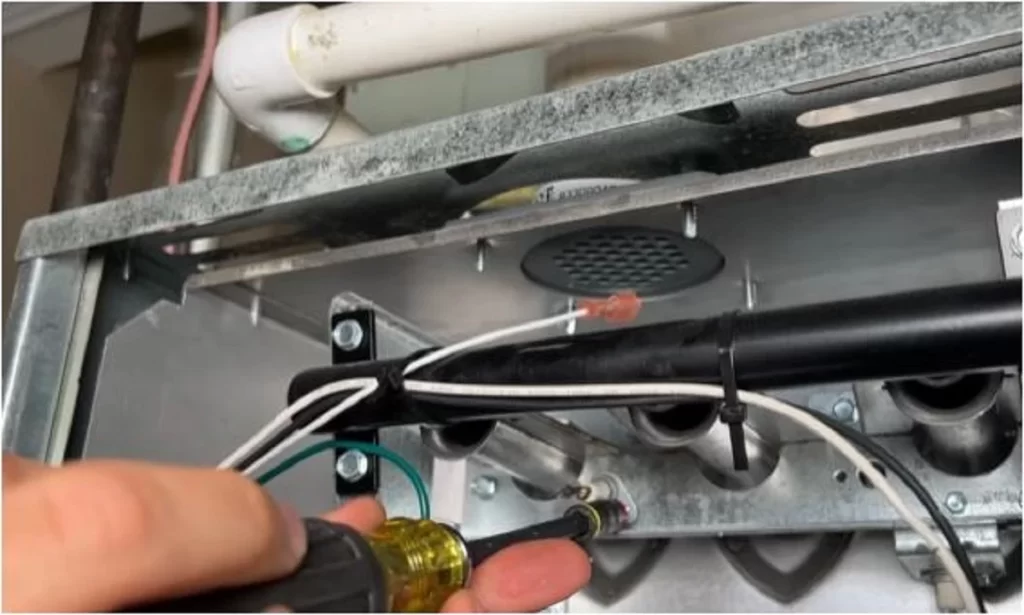Note: This article may contain affiliate links, which means if you make a purchase following our links won’t cost you extra, but we may earn a commission. Learn more
One common issue many homeowners face is their furnaces failing to light. This problem can be attributed to various factors. If your furnace blower comes on but there won’t ignite, it suggests the system recognizes the need for heat, yet there’s an obstacle preventing the ignition process.
A widespread cause is the automatic pilot light not igniting. This can result from dirt accumulation, a faulty sensor, or a malfunctioning ignition system. In some instances, the furnace won’t ignite and then promptly shuts off. This rapid shutdown often signifies a safety mechanism in action due to a detected problem.
If there’s no audible click during attempts to ignite, it might indicate an electrical issue or a defective ignition switch. On the other hand, a situation where the furnace ignitor lights but produces no flame typically points to a gas supply problem. Gas supply disruptions can arise from closed valves, empty gas tanks, or blockages in the gas line.
Should you encounter ignition troubles, it’s advisable to reset the electronic ignition furnace. For most models, this entails turning off the power for a few minutes and then restarting. Always consult the furnace’s manual or a professional for specific reset instructions.
How Auto Ignite Furnaces Work?
Auto-ignite furnaces are designed to automatically light, eliminating the need for a pilot light. Key components of an auto-ignite furnace include a control board, a hot surface igniter, and a gas valve. The functioning of an auto-ignite furnace involves the thermostat signaling the control board to open the gas valve.
The hot surface igniter then heats up, igniting the gas and starting the furnace. However, common issues can arise with auto-ignite furnaces such as faulty control boards, dirty burners, or a malfunctioning hot surface igniter. It is vital to get these issues resolved quickly by contacting a professional HVAC technician to avoid further damage to the furnace.
Proper maintenance and regular checkups can prevent these issues from causing inconvenience and costly repairs.

Reasons for Auto Ignite Furnace That Won’t Light and What to Do
Auto ignite furnaces are essential for maintaining comfort during cold seasons. Yet, they can sometimes malfunction and fail to light. Identifying the root causes and their solutions can aid in resolving these issues promptly.
1. Faulty Ignition Sensor
The ignition sensor ensures that the gas is ignited once released. Over time, the sensor can become dirty or malfunction. Cleaning the sensor with a soft cloth can often resolve the issue. If the problem persists, the sensor might need replacement.
2. Blocked Gas Valve
If the gas valve becomes blocked or doesn’t open correctly, the furnace won’t light. Inspecting the valve and ensuring its proper functioning is crucial. Replacing a malfunctioning gas valve is typically a job for professionals.
3. Inadequate Gas Supply
A disruption in the gas supply line or an empty gas tank can prevent the furnace from igniting. Checking the gas tank and ensuring the supply lines are clear can help. Ensure the gas valve is turned on and the supply is consistent.
4. Electrical Issues
A defective switch or an electrical malfunction can lead to the furnace not igniting. Resetting the electronic ignition furnace or checking circuit breakers can sometimes solve the problem. If the issue remains unresolved, consult an electrician.
5. Malfunctioning Ignition System
Over time, ignition systems can wear out. If the automatic pilot light doesn’t ignite, it might be due to a faulty ignition system. Replacing the ignition system or its components can be a solution.
6. Safety Mechanisms
Some furnaces have built-in safety features that prevent ignition if a problem is detected. If the furnace tries to ignite and then promptly shuts off, this might be a safety feature in action. Check for obstructions or issues with the exhaust vent, and ensure all safety sensors are functional.
Diy Repairs For Auto Ignite Furnace That Won’t Light
An auto-ignite furnace can sometimes refuse to light. One possible reason is a faulty igniter. If this is the case, replacing the igniter should do the trick. Another potential factor is a dirty or broken flame sensor. Try cleaning or replacing it.
It’s also essential to check the gas supply and make sure it’s functioning correctly. If there’s an issue, it needs to be addressed promptly.
The thermostat might require inspection or replacement, so it’s worth considering. Hopefully, these DIY repairs can fix your auto-ignite furnace and save you money on expensive repair bills.
Conclusion
In the end, an auto ignite furnace that won’t light up can be a frustrating and potentially dangerous issue to deal with. However, with proper troubleshooting and maintenance, it can be resolved. Remember to check the thermostat settings, inspect the ignition system, clean the burners, and ensure there is proper airflow.
If these steps do not solve the problem, it may be time to call a professional for further assistance. Regular maintenance and inspections can help prevent these types of issues from arising in the future.